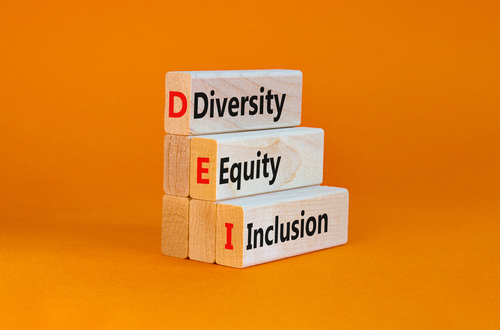Corporate diversity, equity, and inclusion (DEI) initiatives are facing a rocky legal landscape following the Supreme Court’s ruling on affirmative action. In a recent WorkLife article, legal expert David Glasgow suggested that DEI programs can face legal risks when they meet the “three Ps”: preference to a legally protected group with respect to a palpable benefit.
As a result, organizations are rethinking how to advance DEI in a legally safe way, and some are cutting or curtailing DEI in general. Others are shifting away from seemingly preferential practices toward comprehensive approaches that foster inclusion and equity for all. Still, others are looking for ways to show the value of diversity by aligning it more closely with business outcomes. For both approaches, the road to sustainability runs through science.
Better DEI Through Science
The science underlying human behavior and organizational dynamics can help organizations build impactful and legally sound initiatives. Three scientific frameworks — neuroscience (how individuals think and behave), generative interactivity (how teams work interpersonally), and complexity science (how institutions function) — support the three foundational goals of all DEI efforts:
- Interrupting Bias
Neuroscience research reveals that our brains make rapid judgments based on past experiences, often leading to unconscious biases. Labeling bias and using science-based tools to mitigate it promotes more equitable decision-making, no matter what or who is being evaluated.
Debiasing solutions also allow organizations to prioritize diversity in a “safe” way. By focusing on behaviors rather than beliefs, debiasing training and solutions help individuals recognize unconscious patterns and actively counteract them. The result is more objective and equitable decisions that benefit both employees and the business overall.
- Integrating Inclusion
Inclusion goes beyond mere representation. From a business perspective, viewing inclusion as a key driver of change involves creating an environment where everyone can contribute their unique perspectives and talents.
A concept known as generative interactivity helps us understand how people work together to create fair and inclusive workplaces, showing how habits like collaboration, goal-sharing, and supporting each other are essential for making the most of diverse teams. As a result, teams become more innovative, feel safe to share ideas, and develop a sense of belonging. This leads to greater success for entire teams.
- Improving Systems
Complexity science offers a new perspective on safe DEI initiatives. It encourages organizations to see themselves as dynamic, interconnected systems, not static entities. In these systems, individual differences strengthen the whole. This means diversity isn’t a problem to fix but a resource to leverage.
By acknowledging the complexity of human interactions, organizations can move beyond simply having diverse representation. They can create an environment where they value and solicit diverse perspectives. This leads to innovative solutions and problem-solving abilities that wouldn’t happen in a homogenous environment. Complexity science shows us that even small, consistent actions toward inclusion and equity can create a ripple effect, transforming entire organizations.
DEI: A Strategic Advantage
The science is clear: Diversity, coupled with inclusion and equity, directly enhances an organization’s ability to navigate complexity, drive innovation, and achieve superior business outcomes. It shifts the focus from simply increasing representation to creating an environment where everyone can contribute, fostering a culture of innovation and high performance.
With a science-based approach, organizations can build DEI initiatives that are both legally compliant and strategically advantageous. This approach recognizes that DEI is not just a moral imperative but a key driver of success in today’s complex and interconnected world.
Janet M. Stovall, CDE.

